September 6th, 2011
 Cognitive designers spend a lot of energy understanding, leveraging and mitigating the mental biases that dominate our learning, thinking, decision-making and socializing. While cognitive biases or the rules that make-us-human have been extensively studied, most innovators (except for magician and clinicians that use placebos) have not even scratched the surface of leveraging and mitigating them.
Cognitive designers spend a lot of energy understanding, leveraging and mitigating the mental biases that dominate our learning, thinking, decision-making and socializing. While cognitive biases or the rules that make-us-human have been extensively studied, most innovators (except for magician and clinicians that use placebos) have not even scratched the surface of leveraging and mitigating them.
And new insights from research on cognitive biases arrive from various laboratories daily. Take for example, recent research reported by the Association for Psychological Science on the bias to rate ourselves above average. They studied 1600 subjects in 15 culturally diverse countries and found:
“Virtually everywhere, people rate themselves above average. But the more economically unequal the country, the greater was its participants’ self-enhancement.”
This means the self-enhancement bias is likely maximal in the US.
The key question for cognitive designers is: How can we use (leverage or mitigate) this bias to improve a product, service, work process, customer experience, employee development program or other artifact?

Posted in Cognitive Bias, Psychographics | 4 Comments »
September 4th, 2011
Many types of behavior change programs end up relying on communication or messaging to do a lot of the work. The right type of messaging can make all the difference. In cognitive design we have long advocated change messaging that is short, just-in-time, emotionally positive and behavior-specific (tell me exactly what to do). Knowledge cards, a small-step behavior change program, are designed to follow precisely that prescription.

Interesting new research from the University of Michigan supports and extends this idea. The study focused on the impact of text messages sent to mobile phones to help Teens manage their weight. Not surprising they found that specific instructions from peers and sincere positive encouragement were preferred. They also found:
“Other negative response came from the mention of unhealthy food and behavior, even with references to healthier options; Teens began to crave unhealthy foods after being asked about them. Reflective questions, like “What does being healthy mean for you? How does screen time fit in with your goals? How could cutting back on it help improve your health? were also ineffective.”
It is not clear if the preferred messages will actually cause behavior change. It is clear those that are not preferred or even disliked will not. This is an important finding because we sometimes design communications in change programs to invoke comparative and reflective thinking. While that is critical for some applications it will clearly backfire for others.

Posted in Behavior Change, Psychographics | 1 Comment »
September 2nd, 2011
Sony announced a head-mounted display that creates a theater-quality 750 inch virtual screen in 2D or 3D. This takes the cognitive impact of games, movies and video-based communications, training and learning to the next level. Available in Japan now at around $800. Very interested to hear from readers that own or have used Sony’s Personal 3D viewer HMZ-T1.
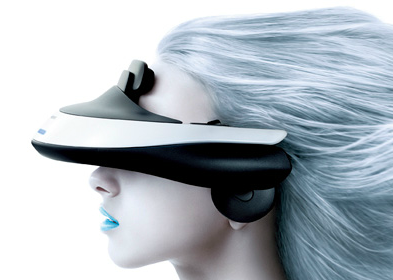
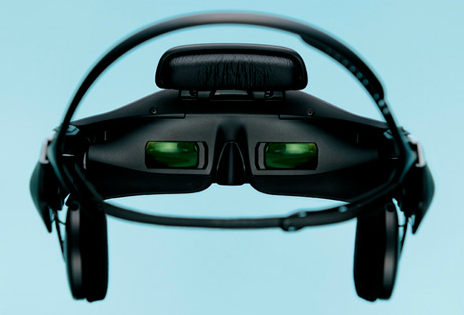

Source of Images: Japanese Photo Gallery

Posted in Related Fields | No Comments »
August 31st, 2011

Inventions like everything in nature exhibit patterns. Finding and leveraging the patterns of innovation is the thrust of TRIZ and related methodologies such as Structured Inventive Thinking (SIT). For a brief but meaningful introduction to SIT check out the LAB. It illustrates the method on everything from corporate training to drugs, office chairs and software.
SIT starts by deconstructing an existing artifact into its components. You then apply a pattern or innovation heuristic to a component to generate compelling possibilities fast and systematically. Example patterns include subtraction where you take a component away and work with what is left. Another is task unification where you assign a new function or task to an existing component. You can apply multiple patterns to one component to think divergently.
Image Source: Animated GIF of Kaleidoscope

Posted in Technique | No Comments »
August 28th, 2011
 Every successful innovator or leader I have met is always trying very hard to figure something out. Asking questions, learning, testing concepts and talking with others about new ideas. That simple observation is at the heart of two new books on innovation.
Every successful innovator or leader I have met is always trying very hard to figure something out. Asking questions, learning, testing concepts and talking with others about new ideas. That simple observation is at the heart of two new books on innovation.
The Innovator’s DNA focuses on five skills of disruptive innovators including asking questions, observing, networking with people for new ideas, making associations and experimenting to uncover insights. Of course you need a the traditional willingness to take risks and challenge the status quo. Likewise in yet to be released book, The Lean Startup, sees successful entrepreneurs are those that systematically experiment with all aspects of their vision – product, distribution, business model – and quickly figure out how to build a sustainable business.
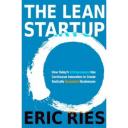 Fuzzy notions of creativity are replaced by crisper notions and even disciplined methods (e.g. validated learning) for figuring things out. Readers of the cognitive design blog will see at the core of both books the psychology of the experiential learning loop where we take action, reflect on the action, conceptualize or build up an understanding of what might be going on, take another action to test that understanding and repeat until you give up or have figured things out.
Fuzzy notions of creativity are replaced by crisper notions and even disciplined methods (e.g. validated learning) for figuring things out. Readers of the cognitive design blog will see at the core of both books the psychology of the experiential learning loop where we take action, reflect on the action, conceptualize or build up an understanding of what might be going on, take another action to test that understanding and repeat until you give up or have figured things out.
Moving through the loop, fast, cheap and deep requires considerable skill and motivation but nothing mysterious. Much like a diet or other forms of self improvement, innovation does not involve rocket science just the hard but enjoyable work of figuring things out.
What are you trying hard to figure out? How fast, cheap and deep are you moving through the experiential learning loop to do it?

Posted in Books, Related Fields, Service Innovation | 2 Comments »
August 27th, 2011
Mathematics education needs more cognitive design. A lot more and fast.
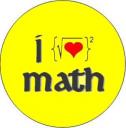 Most math is presented in a way that grates against how our minds really work and leads to student frustration and failure. The clearest signal of this is that students often ask “how does this relate to the real world” and claim they just don’t get math or even hate it. The world runs on math and hate is a strong emotion.
Most math is presented in a way that grates against how our minds really work and leads to student frustration and failure. The clearest signal of this is that students often ask “how does this relate to the real world” and claim they just don’t get math or even hate it. The world runs on math and hate is a strong emotion.
And it is not just math. STEM or science, technology, engineering and math education is under intense scrutiny in the US right now. STEM education is linked to US competitiveness and appears to be failing by many measures especially in K-12. Without a large and creative STEM knowledge base it will be very hard to be a major economic player in the 21st century.
So I am also on the look out for new points of view on STEM education, especially those that are optimized for how our minds really work. For example, the New York Times has a recent OP-ED piece, How to Fix our Math Education, that presents such a view. They point out that our current approach to teaching math is very theoretical and that we should consider the development of quantitative literacy or reasoning. To quote:
“Imagine replacing the sequence of algebra, geometry and calculus with a sequence of finance, data and basic engineering. In the finance course, students would learn the exponential function, use formulas in spreadsheets and study the budgets of people, companies and governments. In the data course, students would gather their own data sets and learn how, in fields as diverse as sports and medicine, larger samples give better estimates of averages. In the basic engineering course, students would learn the workings of engines, sound waves, TV signals and computers. Science and math were originally discovered together, and they are best learned together now.”
Our minds do naturally reason quantitatively. Leveraging that to teach the abstract principles and reasoning of math is good cognitive design. There is great power in mathematical understanding and quantitative reasoning. What we need to do is design experiences where students feel that power in their gut.

Posted in Related Fields, Service Innovation | 1 Comment »
August 24th, 2011
 In cognitive design we seek to understand deeply felt but unmet psychological needs and then create or remake artifacts to meet them. The TQM journal has an interesting article on Affective Design of Waiting Areas in Primary Healthcare that presents a good example. The researchers used the Kansei engineering method to uncover the psychology need to “feel calm” and…
In cognitive design we seek to understand deeply felt but unmet psychological needs and then create or remake artifacts to meet them. The TQM journal has an interesting article on Affective Design of Waiting Areas in Primary Healthcare that presents a good example. The researchers used the Kansei engineering method to uncover the psychology need to “feel calm” and…
“The core design attributes contributing to this feeling are privacy, colours, child play-areas and green plants. Good design of lighting, seating arrangements and a low sound level are also important design attributes to give a more complete design solution.”
A useful finding for cognitive designers working on servicecapes that call for calm.

Posted in Service Innovation, Technique | No Comments »
August 22nd, 2011
 PAIs or positive activity interventions are one of the most important practical findings to come out of the positive psychology movement. These are simple techniques that can be used by individuals or groups to increase positive mental energy, mood and even general happiness. Example PAIs include counting your blessing, sending letters of gratitude or thank-you notes, positive affirmations or meditating on positive feelings, using your signature skills or strengthens to address a problem and intentionally performing acts of kindness. There is strong evidence that such simple practices are a great way to generate significant positive mental energy, the very fuel needed to sustained long and challenging change efforts.
PAIs or positive activity interventions are one of the most important practical findings to come out of the positive psychology movement. These are simple techniques that can be used by individuals or groups to increase positive mental energy, mood and even general happiness. Example PAIs include counting your blessing, sending letters of gratitude or thank-you notes, positive affirmations or meditating on positive feelings, using your signature skills or strengthens to address a problem and intentionally performing acts of kindness. There is strong evidence that such simple practices are a great way to generate significant positive mental energy, the very fuel needed to sustained long and challenging change efforts.
While I have seen PAIs produce strong results in practice, I was a bit surprised by the recent research article, Delivering Happiness that presents evidence that they could be an effective tool for managing clinical depression. That puts the cognitive impact of PAIs on a whole new level and makes them even more important as tools for improving the workplace.
I am interested to hear from readers that have used PAIs in a change effort, training program, process improvement intervention or some other workplace improvement effort.

Posted in Psychographics | No Comments »
August 20th, 2011
 IBM has a vision for a smarter planet. The vision is rooted in taking a scientific approach to services and the emerging internet of things. The pitch is that we can instrument (slap a sensor or servo on) anything, interconnect it with everything and add intelligence.
IBM has a vision for a smarter planet. The vision is rooted in taking a scientific approach to services and the emerging internet of things. The pitch is that we can instrument (slap a sensor or servo on) anything, interconnect it with everything and add intelligence.
Instrument, interconnect and add intelligence is a design pattern that shifts the cognitive load off people, extends the intelligence of individuals and groups and can otherwise be used to a wide variety mind-optimized designs.
Applications big and small are popping up everywhere.
Read the rest of this entry »

Posted in Design, Examples | No Comments »
August 15th, 2011
To effectively change behaviors we need to identify the behaviors we want to stop, start and avoid. For example, if you are trying to lose weight you might need to START weighing yourself daily, STOP serving large portions at breakfast and AVOID starting to snack after 7pm. Determining which behaviors to change and how to reshape them in a way that is pleasurable enough to sustain can take consider learning from experience.
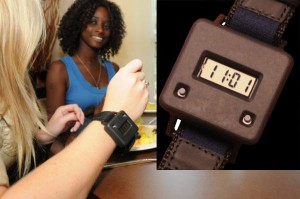 That is why I am always on the lookout for new methods or devices that help us become aware of the simple mechanical actions we take everyday. For example, researchers at Clemson have developed a simple device for automatically counting the number of bites of food or sips of drink you take during the day. You need to press a button to turn it on before eating and off when you are done but otherwise it is 90% accurate at counting your bites and sips. It doubles as a watch, weights less than an ounce, can store information on up to 320 meals or snacks and costs $799.
That is why I am always on the lookout for new methods or devices that help us become aware of the simple mechanical actions we take everyday. For example, researchers at Clemson have developed a simple device for automatically counting the number of bites of food or sips of drink you take during the day. You need to press a button to turn it on before eating and off when you are done but otherwise it is 90% accurate at counting your bites and sips. It doubles as a watch, weights less than an ounce, can store information on up to 320 meals or snacks and costs $799.
“At the societal level, current weight-loss and maintenance programs are failing to make a significant impact. Studies have shown that people tend to underestimate what they eat by large margins, mostly because traditional methods rely upon self–observation and reporting,” said Muth. “Our preliminary data suggest that bite count can be used as a proxy for caloric count.”
Even if bite count cannot be correlated to calories, this device offers a new and automated way of observing our eating behaviors. Focusing on bites and sips may afford new ways of modifying eating behaviors.

Posted in Behavior Change | No Comments »
 Cognitive designers spend a lot of energy understanding, leveraging and mitigating the mental biases that dominate our learning, thinking, decision-making and socializing. While cognitive biases or the rules that make-us-human have been extensively studied, most innovators (except for magician and clinicians that use placebos) have not even scratched the surface of leveraging and mitigating them.
Cognitive designers spend a lot of energy understanding, leveraging and mitigating the mental biases that dominate our learning, thinking, decision-making and socializing. While cognitive biases or the rules that make-us-human have been extensively studied, most innovators (except for magician and clinicians that use placebos) have not even scratched the surface of leveraging and mitigating them.










